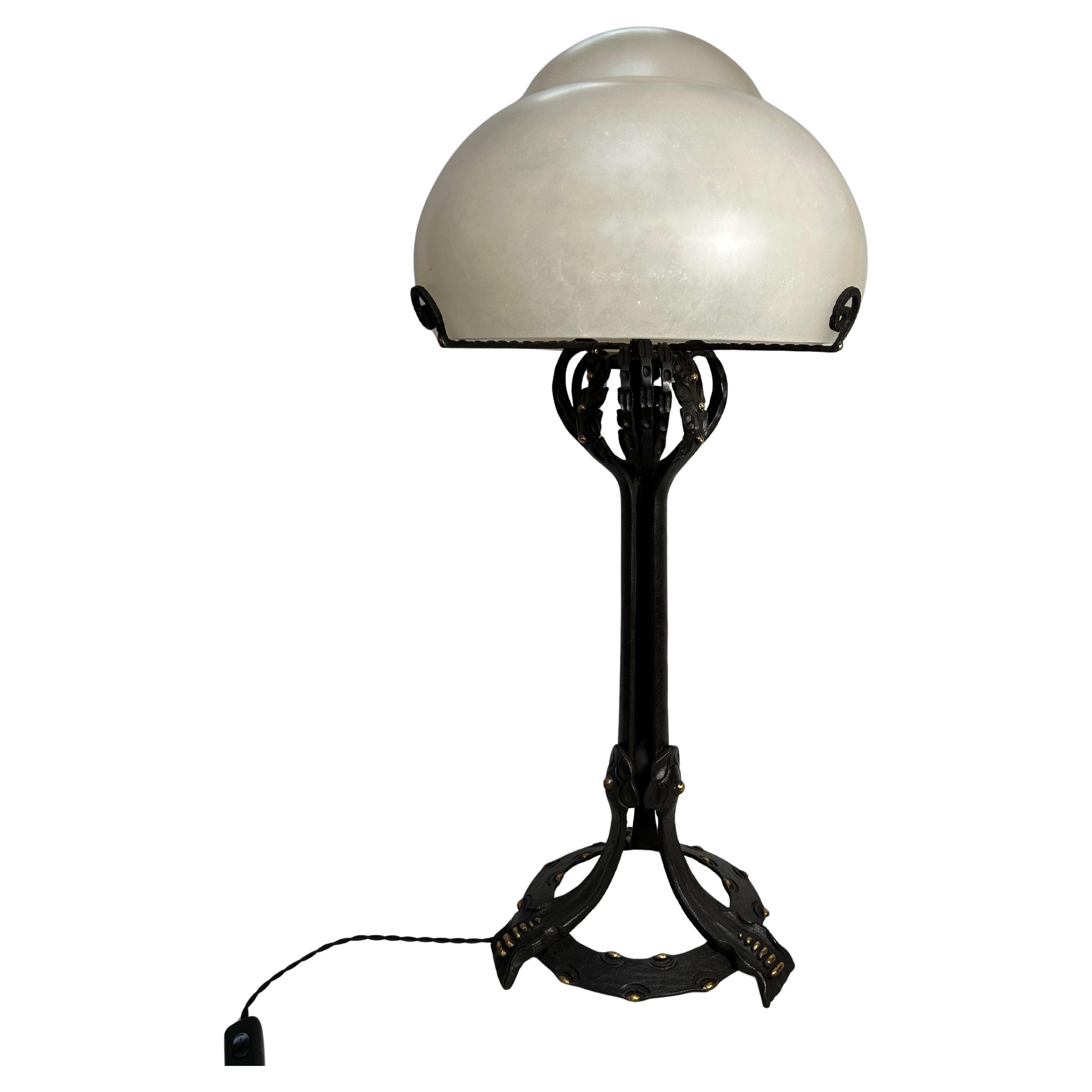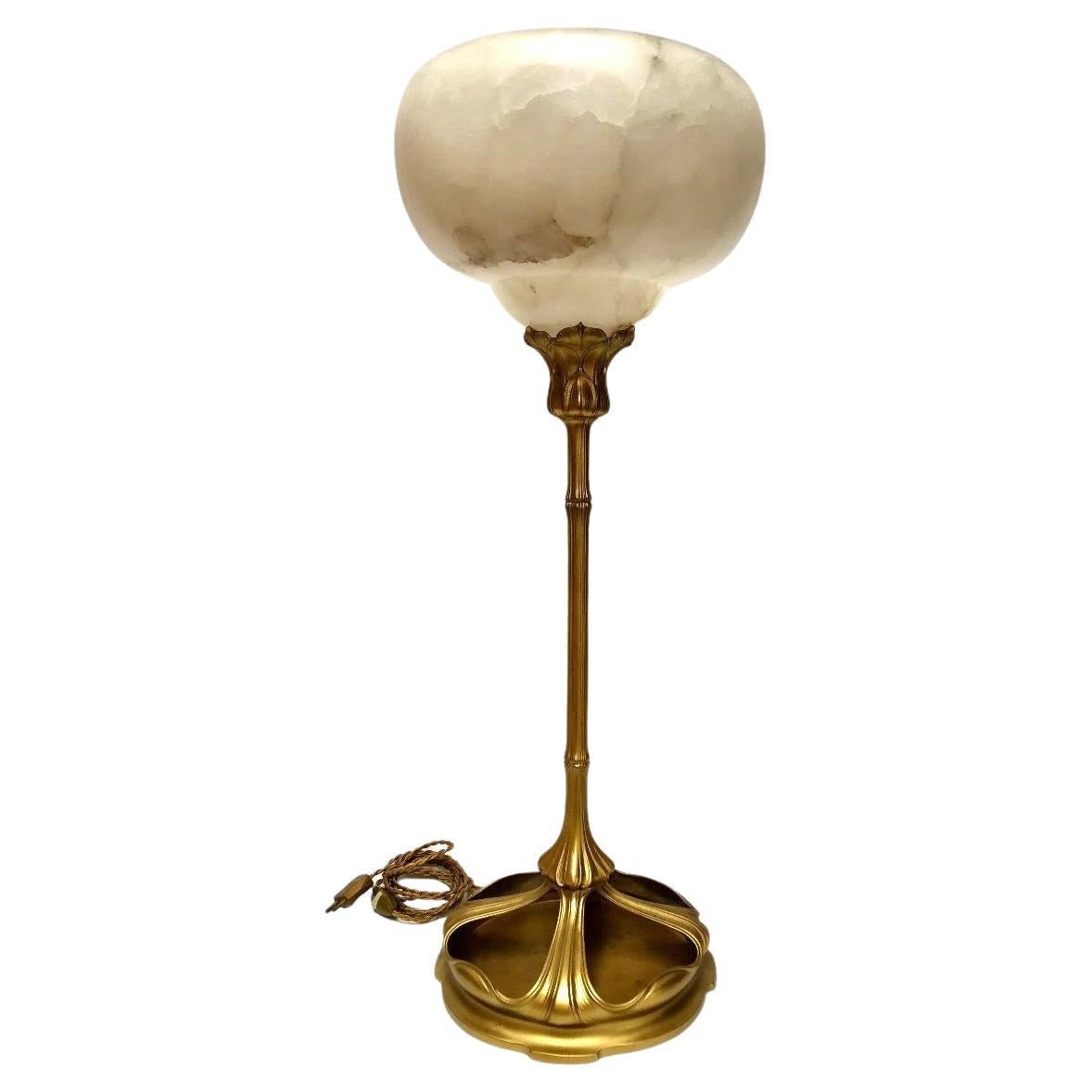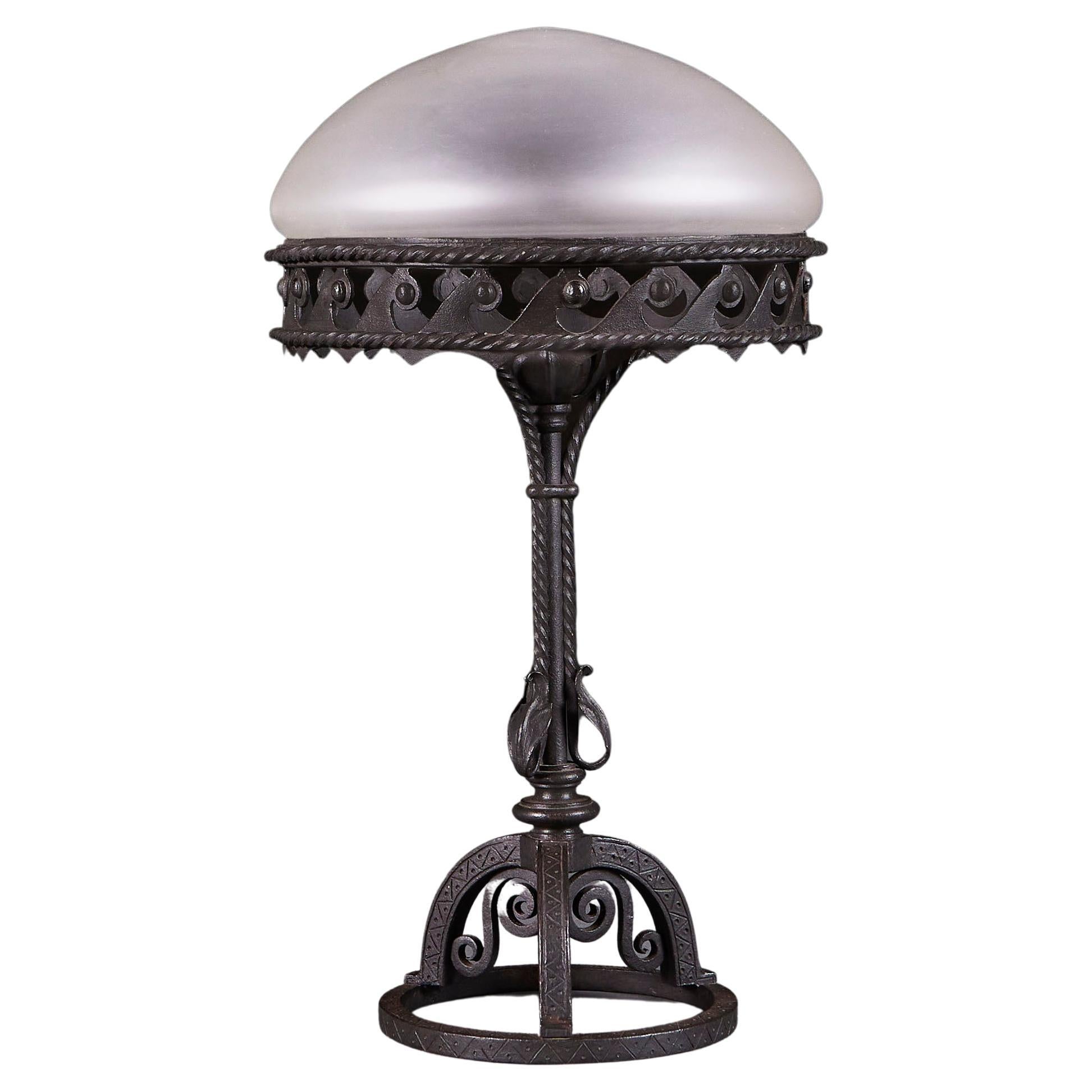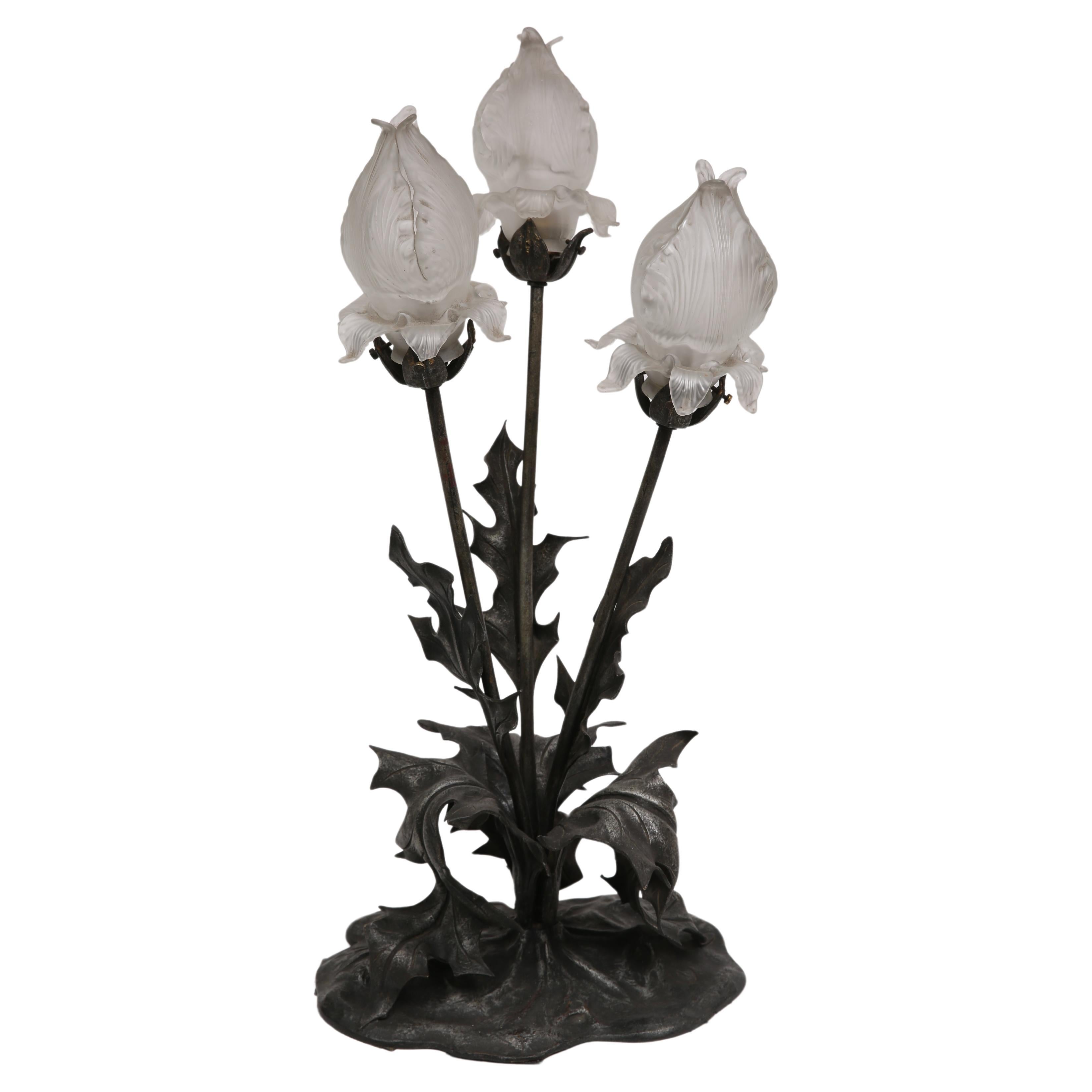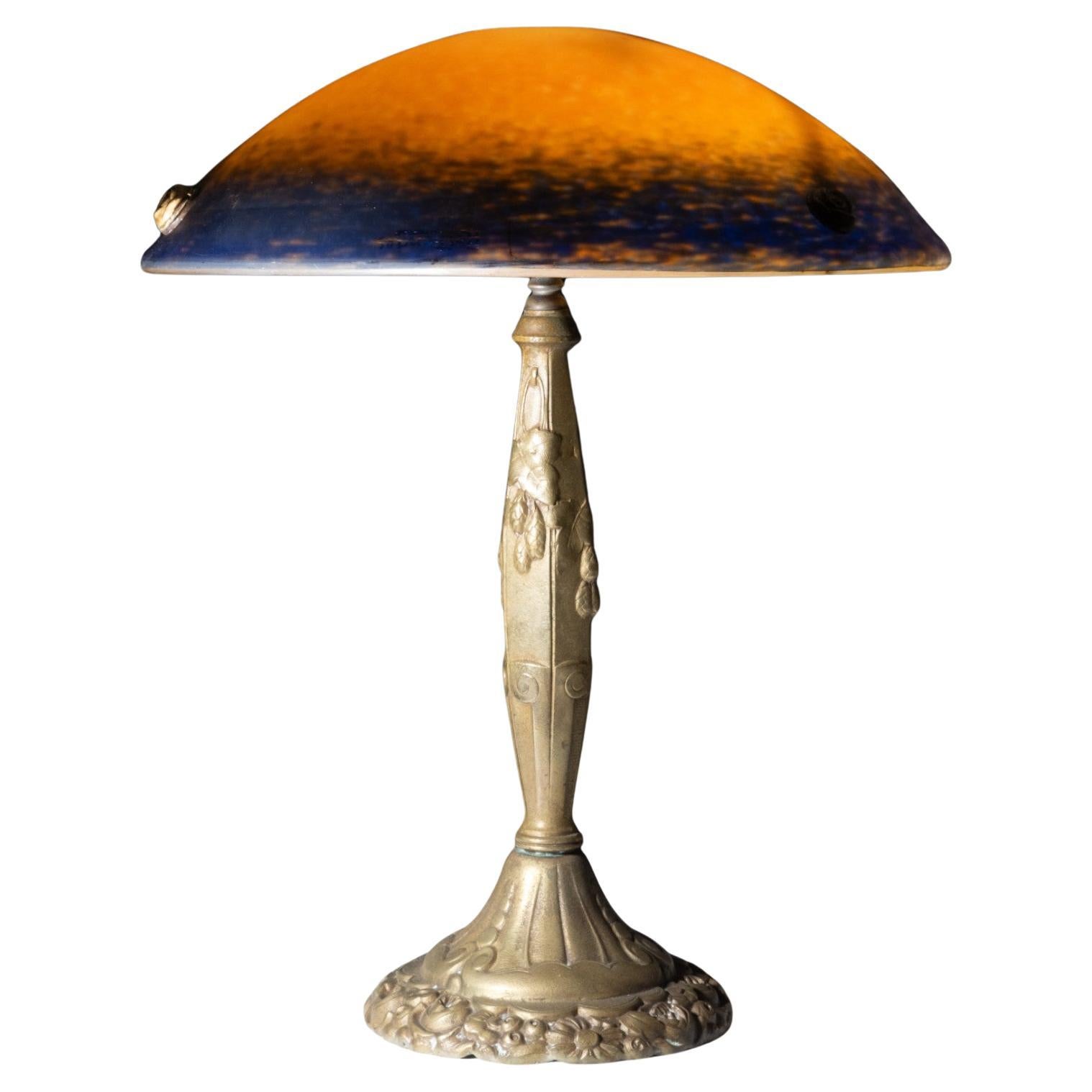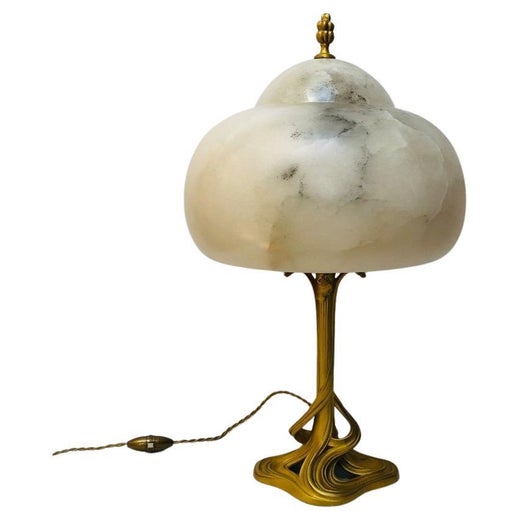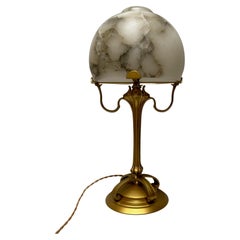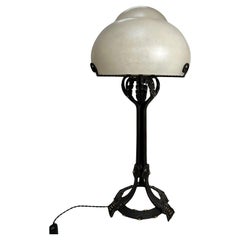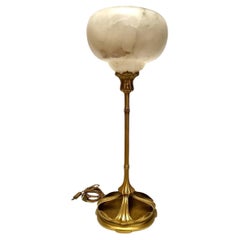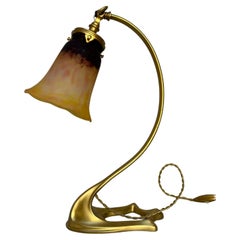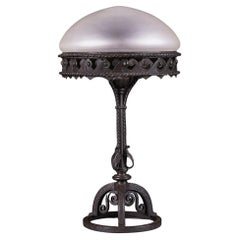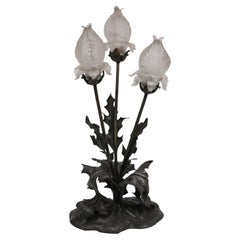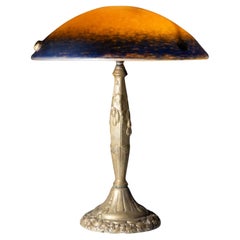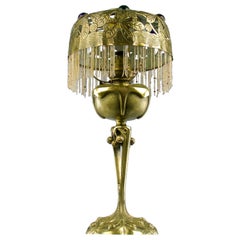Majorelle Art Nouveau Lamp
About the Item
- Creator:Atelier Majorelle (Manufacturer)
- Dimensions:Height: 20.28 in (51.5 cm)Diameter: 11.82 in (30 cm)
- Style:Art Nouveau (Of the Period)
- Materials and Techniques:
- Place of Origin:
- Period:
- Date of Manufacture:1900
- Condition:
- Seller Location:NANTES, FR
- Reference Number:1stDibs: LU7403231220102
Atelier Majorelle
Louis-Jean-Sylvestre Majorelle, more commonly known as Louis Majorelle, was a French artist, metalworker and Art Nouveau designer celebrated for his bedroom furniture, cabinets, chairs and decorative objects.
In 1877, Majorelle moved to Paris from the town of Nancy where he began his studies in painting under Jean-François Millet at the École de Beaux Arts. Following the death of his father, a furniture designer, he returned to Nancy and took over the family workshop. Parisian architect Henri Sauvage designed Majorelle’s house in Nancy, Villa Majorelle, which featured stained glass by Jacques Gruber.
In order to increase productivity and reduce costs — as well as shift the family business’s focus from reproductions of 18th-century furniture such as Louis XV chairs to instead working in the era’s Art Nouveau style — Majorelle integrated modern techniques and processes at Atelier Majorelle (these changes were in part inspired by innovative glassmaker Emile Gallé).
The workshop became known for Majorelle’s distinctive designs and the pronounced craftsmanship of its offerings. There were tables made from mahogany and ormolu that featured handsome bronze mounts and marquetry, table lamps that shared common ground with the prized designs associated with Tiffany Studios, and decorative pieces that Majorelle produced in partnership with Daum, a revered manufacturer of French art glass.
The work was very much characterized by the botanical motifs and curvaceous silhouettes of Art Nouveau design, and the business was successful. Majorelle produced a range of items during the early 1900s and was a participant in the 1900 Paris Exposition as well as the Exposition de l'Ecole de Nancy in 1903.
In 1916, a devastating fire broke out in Majorelle’s factory on the rue du Vieil-Aître in Nancy. It destroyed all of the company’s awards, sketches, molds, equipment and archives of Majorelle’s work. In 1917, destruction again shook his business when his shop on the rue Saint-Georges was bombed by German aircraft. The designer marched on — he relocated to Paris where he shared a workspace and created vases and other vessels in the Art Deco style before he moved back to Nancy. Majorelle designed the Nancy Pavilion at the International Exhibition of Modern Decorative and Industrial Arts in 1925 with Alfred Lévy. He died in 1926.
Find antique Louis Majorelle cabinets, seating and decorative objects on 1stDibs.
- ShippingRetrieving quote...Shipping from: NANTES, France
- Return Policy
More From This Seller
View AllEarly 20th Century French Art Nouveau Table Lamps
Alabaster, Bronze
Early 20th Century French Art Nouveau Table Lamps
Alabaster, Bronze, Wrought Iron
Early 20th Century French Art Nouveau Table Lamps
Alabaster, Bronze
Early 20th Century French Art Nouveau Table Lamps
Bronze
Vintage 1910s French Art Nouveau Table Lamps
Wrought Iron
Early 20th Century French Art Nouveau Table Lamps
Spelter
You May Also Like
Early 20th Century French Art Nouveau Table Lamps
Wrought Iron
Vintage 1920s French Art Nouveau Table Lamps
Bronze
Early 20th Century French Art Nouveau Table Lamps
Glass
Early 20th Century French Art Nouveau Table Lamps
Bronze
Antique Early 1900s French Art Nouveau Table Lamps
Glass
Vintage 1910s Austrian Jugendstil Table Lamps
Brass

